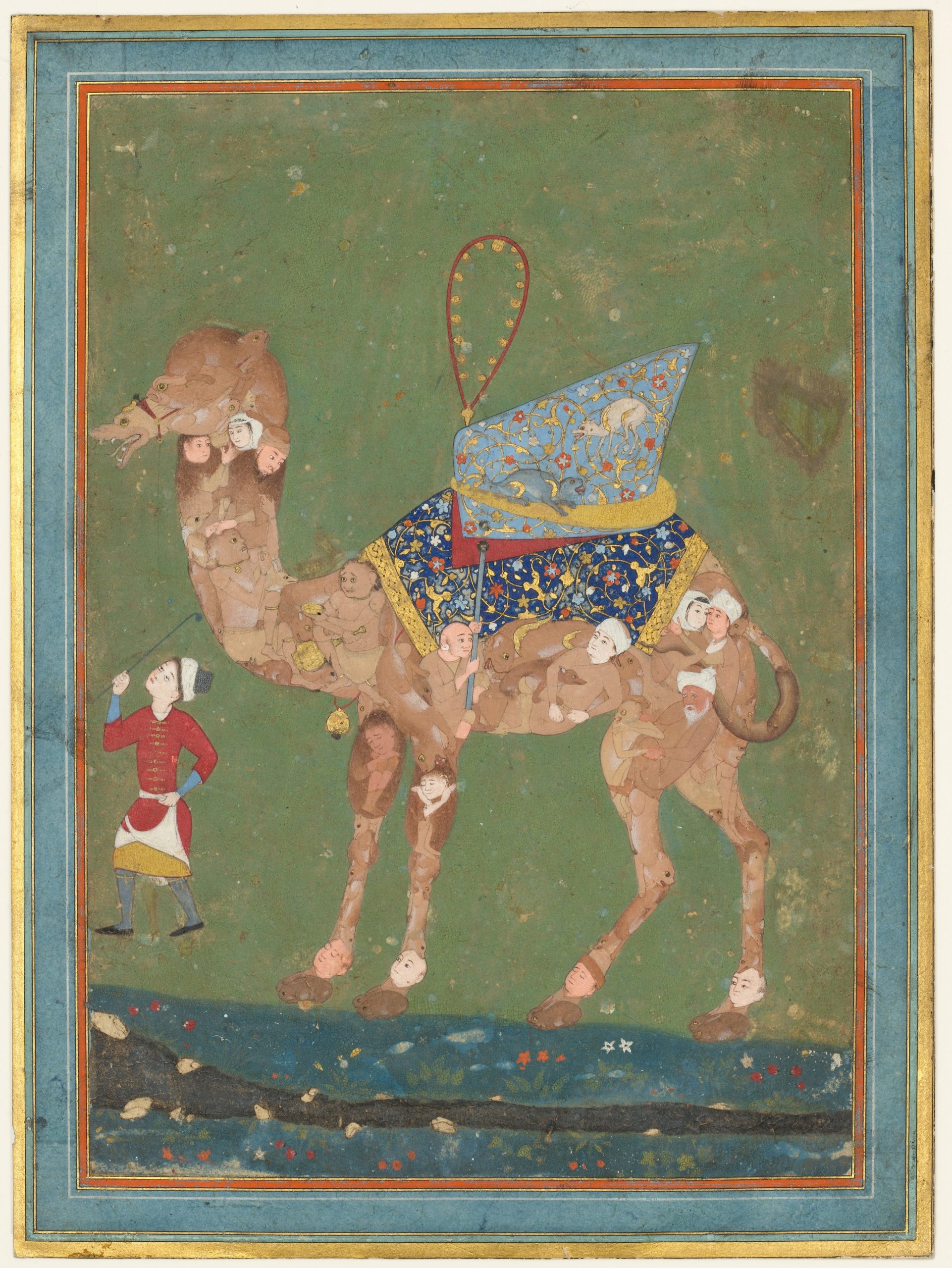
RESEARCH
We are fascinated by the power of non-genetic variation to impact phenotype and adaptation. Just like the ‘composite’ camel in this old Persian painting (~1500 A.D), phenotype is composed of many layers. The outer skeleton of the animal gives the basic shape and structure, similar to the genotype. The external environment in the form of the man can guide its movement and change direction. In addition to genes and environment, non-genetic variation contributes to cellular phenotype and behaviour. Many smaller animals co-exist within the camel’s body here, each with their own minds and impulses. This is analogous to various changes in RNA and protein sequence and expression within the cell which contribute to non-genetic changes. One of the largest sources of non-genetic variation in any living cell is mistranslation or errors in protein synthesis. Mistranslation not only alters protein sequences at a low frequency, but also regulates gene expression, activates stress responses, aids in short term adaptation, generates phenotypic variability and indirectly impacts the genotype. We are interested in the mechanistic and evolutionary implications of bacterial mistranslation on cellular behaviour.
